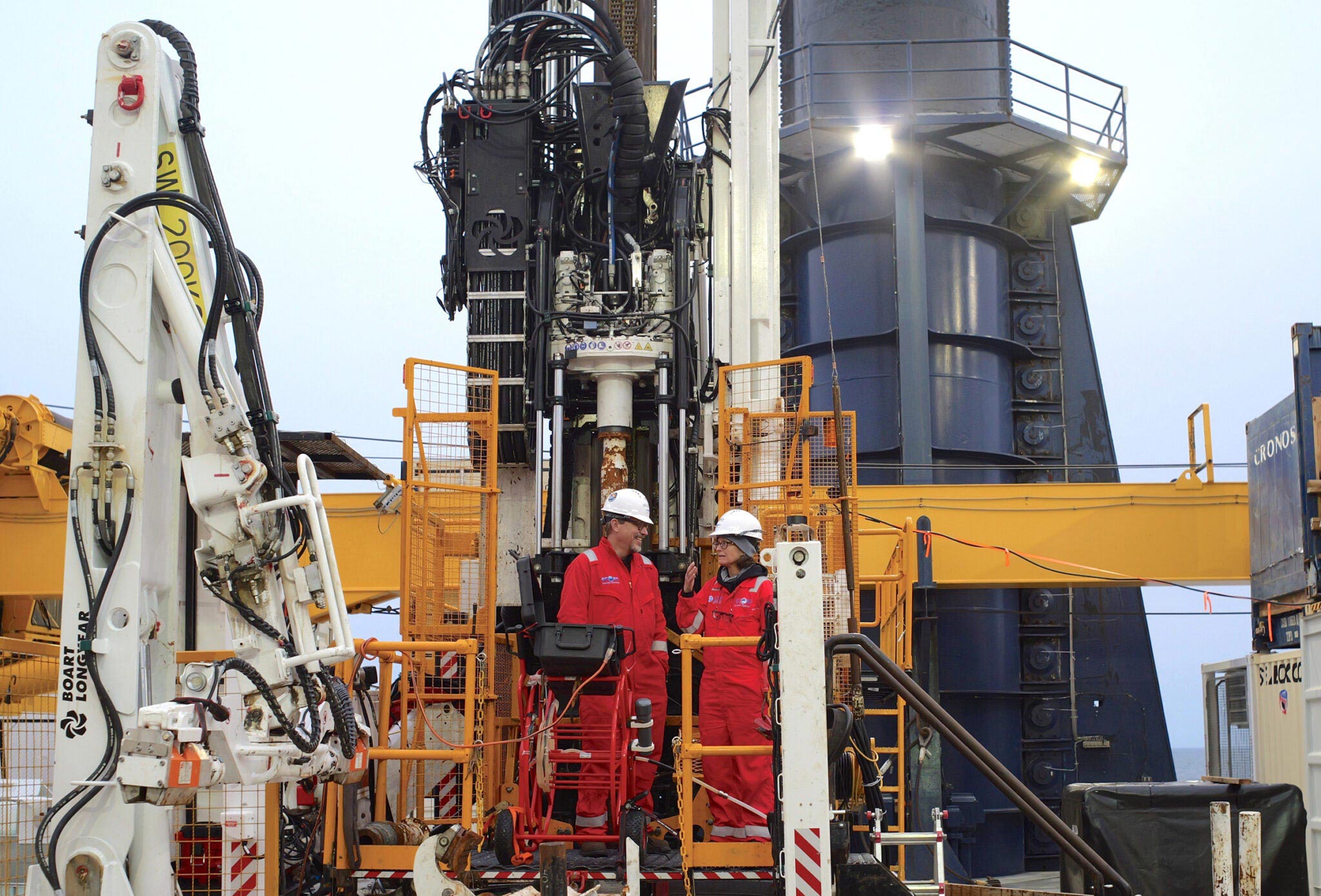A team drilled offshore Nantucket and recovered cores with water near drinking quality. Studies will trace nitrogen cycling and measure the age of this subseafloor reservoir.
How did freshened water come to be trapped beneath the New England Shelf, how long has it remained there, and what volume does it represent?
Rebecca Robinson, a professor at the University of Rhode Island’s Graduate School of Oceanography, is investigating these questions by analyzing material collected from three offshore sites near Nantucket.
Robinson was one of three lead scientists directing the New England Shelf Hydrogeology expedition, a collaborative effort involving 41 researchers from multiple nations and disciplines. Over the course of 74 days at sea, the team recovered water and sediment from the subseafloor, producing 718 cores with a combined length of more than 871 meters. These samples are now being studied in laboratories to uncover the history and characteristics of the offshore reservoir.
Unusually fresh water below the seafloor
“Sampling of this offshore freshened groundwater to the extent that we can make comprehensive geochemical assessments of its history, including its age, is unprecedented in scientific ocean drilling,” said Robinson.
The salinity levels of sediments below the seafloor are typically close to those in the overlying ocean, yet offshore New England, the subseafloor contains an unusually large reservoir of freshened water.














/cdn.vox-cdn.com/uploads/chorus_asset/file/25255503/1246654654.jpg)
